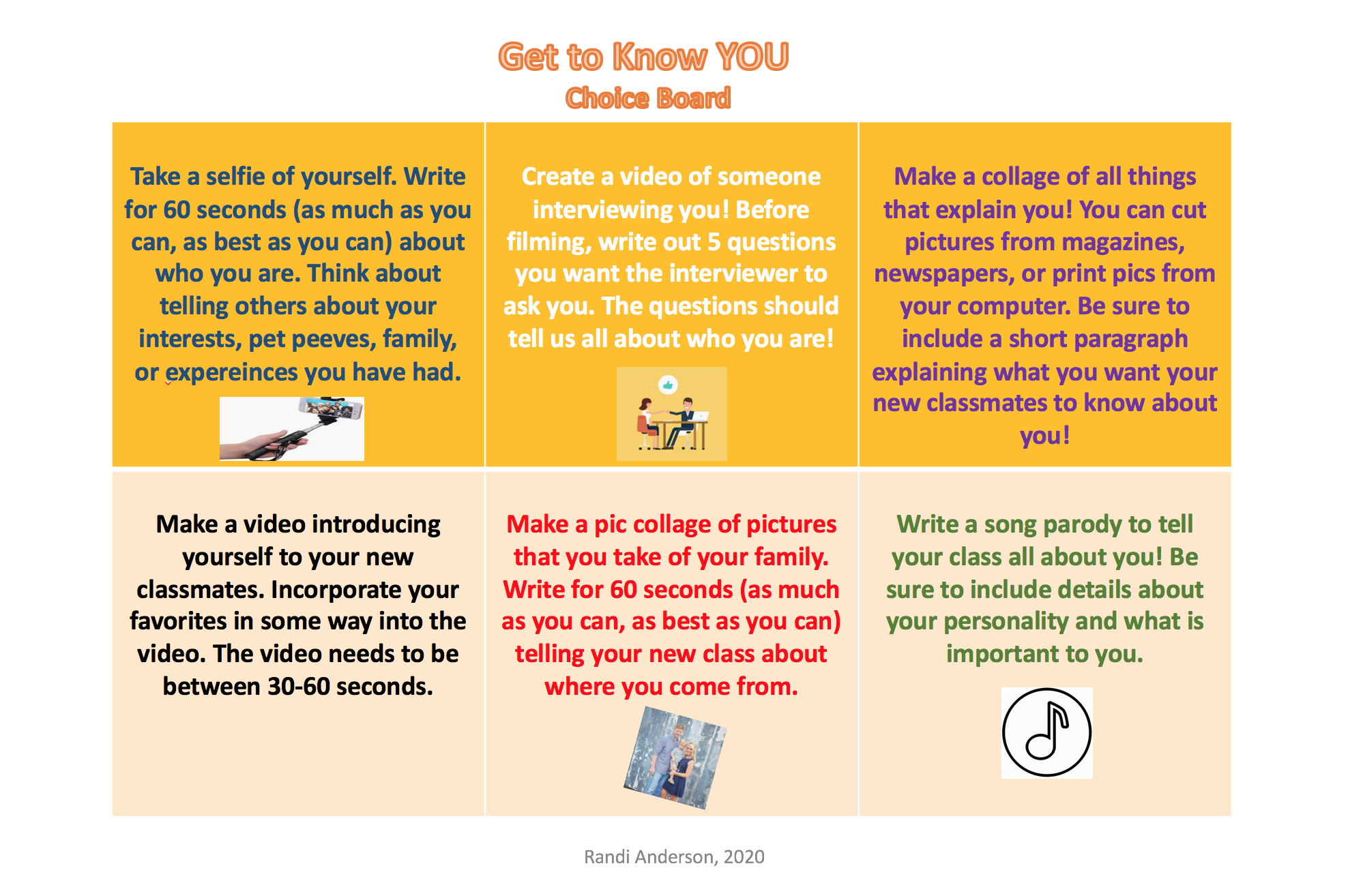How Do We Blend Offline with Online?
I have always been a big proponent of giving students experiences! Research says we remember what we experience (Dale, 1969). How do we get students to have experiences when our instruction is virtual? I loved this idea from Caitlin Tucker, offline instruction can incorporate interests, choice, and experiences. I've also been blogging for several months about enrichment experiences for students grades K-12. Give students a choice of experiences to choose from for the week. The experiences are tied to the content area of study. Students choose an experience and then read, talk, and write about their learning through that experience.
Examples:
- For math measurement: Students research their favorite dish. They then read about the process, ingredients, and devise a plan and prepare to cook the dish. Students document the experience by taking pictures or recording videos. They then can choose a way to document the experience and discuss with peers (online) about their learning and how measurement is important in real life.
For writing: Students choose a musician that they love. Students will research the musician and study one of their favorite songs from that musician. Students report back to the class on the author's craft in the song, the musician's background that influenced the lyrics, and how the tone was set by the artist. All while choosing an avenue for their presentation, i.e. Ted Talk, Tellegami, etc.
- For primary students: Scavenger hunts through their house to find vowel pattern words. The pantry is a great place to hunt for words. Students record their findings by taking pictures and making a Pic Collage to share on their virtual learning class meeting.

Choice Boards for Student Engagement
I love using choice boards in the classroom and online! Choice drives motivation. After all, who likes being told what to do (not me). Giving students 3 to 6 choices per week of tasks or experiences is a great way for students to be self directed in learning. Caitlin Tucker has also discussed this idea on her blog and I love it! The choice boards can incorporate different approaches to learning from more traditional tasks to incorporating more of the arts into your instruction. Here is an in-person choice board that I used in my elementary ELAR classroom and one that I recently made for the blended learning model.

Conferring with Students (Online & Offline)

One of the most important aspects to think about for distance learning is how to build or keep strong relationships with our students. Conferencing with students is an excellent opportunity to provide descriptive feedback. I plan for conferencing time each week with them. It can be as simple as 1-2 minutes of in-person conferring, to 5 minute FaceTime sessions with each student each week.
Implementing this into your schedule ahead of time will keep you on track. For in-person classes, I plan for 5 minutes each day/class period to meet with students during independent work time. For virtual, I schedule it in 5-10 minute increments. Conferencing is a great relationship builder as well. Spending quality time with anyone will build a relationship, whether in person or virtually.
I found a great slide deck on slidesmania.com for creating student data binders. This is a great place for you to keep notes about each students' strengths and goals for learning.
You will want to create a weekly schedule for student conferences. The easiest way to do this is to divide your class by 4 or 5. Use 4 if you plan to confer 4 days per week and 5 if you plan to confer 5 days. Then assign 1/4 or 1/5 of your student to each day of the week. Be sure to communicate a day and a time to each student. I put the day of the week on the front of their Reader's, Writer's, and Math Notebooks. This will be the day/time that you will meet 1:1 or in a small group and talk with them about their strengths, goals, create an action plan, and build a strong, caring relationship. My students never forgot their day as they seemed to look forward to the 1:1 attention to celebrating their learning.
If your students are not in class for the conferences, you might consider sending out a Signup Genius so parents can pick a convenient time.


